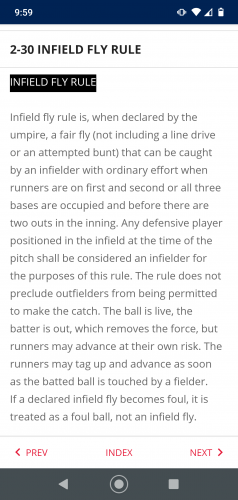During a local HS game a tiny lefty slapper who obviously has zero upper body strength is up to bat in the first inning with no outs and bases loaded. The opposing coach pulls all three outfielders into shallow outfield. The slapper flicks her wrists on an inside pitch and flies out to the right fielder.
Her teammate, a lefty big bopper, is up next inning and she drives one over the right fielder's head. Fast forward to a later inning and big bopper puts it over the right field fence just inside the foul pole.
FF again. big bopper is up with no outs and runners on 1st and 2nd. The opposing coach puts on a shift with 2b in shallow right field. Big bopper takes a scary swing but gets under it and chips it to the 2b in shallow right field exactly where the RF caught the lefty slapper's fly ball earlier in the game. Umpire immediately calls IF fly - batter out.
How deep in RF does 2b have to catch the ball before it's no longer an IF fly?
Her teammate, a lefty big bopper, is up next inning and she drives one over the right fielder's head. Fast forward to a later inning and big bopper puts it over the right field fence just inside the foul pole.
FF again. big bopper is up with no outs and runners on 1st and 2nd. The opposing coach puts on a shift with 2b in shallow right field. Big bopper takes a scary swing but gets under it and chips it to the 2b in shallow right field exactly where the RF caught the lefty slapper's fly ball earlier in the game. Umpire immediately calls IF fly - batter out.
How deep in RF does 2b have to catch the ball before it's no longer an IF fly?




